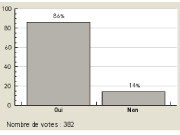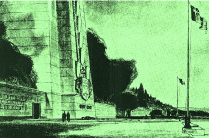Gatineau Park: Not a Public Space
Gatineau Park recalls those private clubs of old which appropriated vast swaths of Quebec’s territory, turning them into a preserve for out-of-province cliques... [1]
Being in essence a gated community run for its landowners, Gatineau Park exists amid utter bureaucratic anarchy thanks to the National Capital Commission (NCC). At once a provincial game sanctuary, a federal park, a municipal fiefdom and a private playground, no one seems to know who really runs it, where its boundaries are, or even who owns lands around lac La Pêche or the Outaouais CÉGEP.
As a result of the administrative vacuum created by the NCC, houses are built on the lakebed at Meech Lake – in the fish habitat – public picnic grounds are furtively closed at Kingsmere to make way for private homes, property is rented to dope growers, while the park’s ecological and territorial integrity is being mercilessly undermined. Since 1992, the NCC has removed eight square kilometres of land from Gatineau Park, while allowing 119 new homes to be built inside it, along with a Loblaws superstore, a donut shop, a gas station, a fire hall, etc.
And completing this portrait of a vassalized territory is the recent appointment of Marie Lemay as head of the NCC. In the late nineties, as a senior official with the Municipality of Chelsea, Ms. Lemay stood by helplessly while Meech Lake landowners wantonly trampled bylaws and built new housing on the lakebed – below the high-water mark...
Today, as NCC CEO, Ms. Lemay has made helplessness to protect Gatineau Park and failure to fulfil her duties the trademarks of her administration. She has routinely been caught off guard by development projects in the park; allowed construction of new housing on Carman Road; retained the services of a law firm having close family ties with Gatineau Park landowners to tell her she lacked authority to impose a development freeze in the park. As well, Ms. Lemay has misled a parliamentary committee,[2] overseen an administration which has limited access to information and participated in an attempt to discredit park activists – while refusing to disclose the nature of an NCC director’s conflict of interest in Gatineau Park. [3]
Is it any wonder the former Chelsea mayor and Gatineau Park landowners greeted her appointment with great enthusiasm? As a patsy for the local clique, it would be hard to find a better candidate…
History
Created in 1938, Gatineau is the only federal park not protected by the National Parks Act, largely as a result of former Prime Minister William Lyon Mackenzie King's caution, fear of criticism and desire for privacy.[4]. This situation, unfortunately, seriously threatens its ecology, boundaries and land mass.
Gatineau Park was not only the first national park advocated for Quebec, it was also the first national park advocated for creation outside the Rocky Mountains of the West, and the first national park advocated for creation by the first parks service in the world, the Dominion Parks Branch.
On December 3, 1913, Dominion Parks Commissioner James Harkin wrote to Deputy Minister of the Interior William Cory, arguing for the creation of a nation-wide system of parks, the first of which was to be Gatineau Park. In his memo, Harkin said:
"The East has no national parks like those in the Rockies, and it is proposed that the country develop a broader scheme of parks than exists in any other country. Bringing into effect the proposed Gatineau Park would, I think, most easily commence this scheme."[5]
A few months later, on Cory’s suggestion, Harkin wrote Quebec Minister of Mines and Forests Charles Devlin inquiring whether he would help establish a national park in the Gatineau district. Although provincial officials wrote back that the matter would receive their minister’s immediate attention, Devlin died before he could follow up on Harkin’s request, and no further response was ever received. And with First World War intervening shortly thereafter, the government of Canada had to tend to more pressing matters.
On April 7, 1927, the national park idea was again raised in the House Commons, where MPs considered a bill to create the Federal District Commission, which would build parks and parkways on both sides of the Ottawa River. During debate, however, Conservative MP John Edwards accused Prime Minister King of wanting to create a park around his Kingsmere property and ease access to it by building a parkway. Though he denied the charge, the criticism would shape King’s subsequent decisions regarding the park
Federal Woodlands Preservation League
Eight years later, at the urging of Percy Sparks of the Federal Woodlands Preservation League, Minister of the Interior T.G. Murphy commissioned a survey to examine the effects of fires and excessive logging in the Gatineau Hills. Among other recommendations, the survey proposed creating a national park.[6] Two years later, however, King chose instead to solve the problem by gradual property acquisition, creating Gatineau Park in embryonic form on July 1, 1938.
In his diary entry of December 20, 1937, King explained the reasons behind his decision, writing that he would allow the park to be created, despite his aversion to tourists invading the Meech and Kingsmere Lake areas, and his fear that he would be criticized for wanting to create a park around his country estate.[7]
Part of King’s anxiety may also have been caused by the circumstances surrounding the creation of another national park. In 1926, King had been nominated as the Liberal candidate in the Saskatchewan riding of Prince Albert, with one of the conditions being that he create a national park there. Following his election in February 1926, King showered the riding with largesse, and at one point worried that the rewards given the riding might “attract the attention of other constituencies to the fact that so many appropriations have been made for a constituency all at once.”[8]
King's self interest and fear of criticism greatly contributed to denying Gatineau Park status as a national park in the 1930s; however, the reasons officials give today for this condition do not stand up to careful analysis.
Controversy over parkland ownership
As a general rule, the Quebec government is blamed for Gatineau Park’s continued lack of national park status, because it has allegedly always refused to transfer its 17% "ownership" of the land to the federal government.[9]
For example, appearing before the Commons Environment Committee on April 14, 2005, Parks Canada CEO Alan Latourelle said that the preconditions to creating national parks include a federal-provincial agreement to do so, along with the province's transferring to the federal government the surface and subsurface rights to the lands concerned. Referring specifically to Gatineau Park, he said that:
"Part of the land is not federal. It is provincially owned – about 11% [sic] of it – and the subsurface rights are owned by the Province of Quebec. In this specific case, if it were to be considered for a national park, we would require the government of Quebec's support, and clearly historically we have not received that level of support anywhere in Quebec to create national parks. So it's not an option we're currently looking at."[10]
However, by virtue of a 1973 agreement, the Quebec government transferred the "control and management" of 12,500 acres of provincial lands located inside Gatineau Park to the federal government – "in perpetuity" according to the two accompanying Orders in Council.[11] The province also transferred the control and management of the park’s lake bottoms, committed itself not to issue mining exploration permits, stipulated that the lands it was transferring were to form part of Gatineau Park, and guaranteed that the rights it was transferring were free of all defects in title. In such agreements, and those preceding creation of national parks, it is control and management of the land and resources, not ownership, that is being transferred, a principle confirmed by the Supreme Court.
When NCC officials testified before a Senate committee, they admitted to having "control and management" of those lands by virtue of the 1973 agreement.[12] However, the NCC has also contradicted itself regarding these so-called Quebec lands. First, in its 2005 Gatineau Park Master Plan, the agency said that 17% of the park "is owned by the Province of Quebec and is managed by the NCC under the terms of an existing agreement."[13] Second, in direct contradiction to this, the NCC’s immediate past CEO, Micheline Dubé, confirmed in a September 14, 2007 letter that: “The NCC has asserted to the province of Quebec its position that the 1973 agreement is valid and that, as between the province of Quebec and the NCC, the agreement transferred ownership.” [14]
However, the NCC and the Quebec government cannot own the same lands concurrently. Moreover, the NCC makes payments in lieu of taxes to the Lac La Pêche lands, confirming beyond any doubt its ownership of the lands.
This issue was settled on March 20, 2009, when the Gatineau Park Protection Committee (GPPC) intervened before Quebec’s Administrative Tribunal (QAT), managing to secure rightful federal ownership of 61.5 square kilometres of Gatineau Park land. As a result of this intervention, the Quebec Justice Department withdrew its appeal concerning ownership of Gatineau Park lands.
The only official NCC statement following this QAT decision, was from Chief Executive Marie Lemay. She said that the titles in the land exchange still had to be registered – 36 years after the agreement was signed. A completely absurd statement ... [15]
According to legal scholars Paul Lordon and David W. Mundell, there is no legal obligation for titles to be registered in the case of a transfer of administration and control over land from the provincial government to the federal government. Titles, they argue, remain vested in the Crown, while only administrative control passes from one government to the other.[16]
To understand what is really preventing Gatineau Park from becoming a national park, it is useful to underline that section 5 (1)(a) of the National Parks Act stipulates that the federal government must hold “clear title to or an unencumbered right of ownership” over all lands inside a prospective national park. So, as long as there are private properties in Gatineau Park it cannot be made into a national park.
Changing park boundaries
The NCC also maintains a great deal of confusion regarding the precise nature of Gatineau Park’s boundaries.
For instance, in response to a written question submitted in 2004, the NCC informed Senator Mira Spivak that “the legal boundary of the park had been established by federal Order in Council in 1960.”[17] However, the agency said the exact opposite to MP Ed Broadbent about a year later, claiming that “the 1960 Order in Council did not establish the park boundary.”[18] Furthermore, when Mr. Broadbent requested the most recent complete legal description of Gatineau Park’s boundaries, “he was informed that no such description exists.” [19]
Adding to the confusion and mystery, former NCC Chairman Marcel Beaudry said in a letter of April 12, 2005 to senators that Treasury Board had approved the park’s new boundary in 1997. However, in response to a written question from Senator Spivak seeking clarification, the NCC told her that Treasury Board had not established the park boundary...[20] And in the wake of all these contradictions, the NCC has also claimed that the park’s boundary was set by everything from the Meech Creek Valley Land Use Concept, to the National Interest Land Mass, to section 10(2)(c) of the National Capital Act.[21]
To try to get to the bottom of this, Senator Mira Spivak raised a question of privilege on the issue on November 22, 2005. [22]
Truth is, however, NCC documents confirm that Gatineau Park’s boundary was established by order in council in 1960, and that any changes to that boundary would require a new order in council.[23] However, no new order in council was ever adopted to ratify the park’s so-called 1997 boundaries, and only the 1960 boundary is legally valid. Accordingly, the Loblaws on Saint Raymond Boulevard remains within the 1960 boundary, while the Meech Creek Valley is outside the park.[24]. Moreover, this means that eight square kilometres of land has been removed from the park.
Private property in the park
In all its Gatineau Park Master Plans, the NCC argues that private inholdings are detrimental to the park's public purpose,[25] since they create gaping holes that shatter park integrity and continuity, making it difficult to protect wildlife, as well as natural and cultural resources. Though inholdings make up only two percent of the park – i.e., some 300 properties covering about 2,100 acres [26] – the handicap they impose and the problems they cause are out of proportion to their size. [27]
In general, private property is located near the park’s prime scenic and cultural sites like Meech and Kingsmere lakes, seriously impeding public access and enjoyment. They also create other problems: construction of access roads, land subdivisions, fragmentation and damage to habitat, inholder efforts to prevent the building of park facilities near their land, conflicts between owners and visitors, etc.[28]
There are several specific examples of the harm private lands do to the park, like the building of houses on the lakebed, the pollution of Meech Lake and closing of public beaches due to the spread of blue-green algae in 2007 and 2009. A study conducted for the NCC confirms that Meech Lake residents are responsible for most of the human-produced phosphorous flowing into the lake: 33% against 13 percent for visitors.[29] Other examples: the closing of the Booth picnic site in 1989 to make way for new private homes; requests made by the Meech Lake Association to close Blanchet Beach and the boat launch; the muddying of Meech Lake reported in the media in 2008, etc.
A controversy over a residential development in the park broke out in 2008 when news of an 18-house residential development came to light.[30]
Manning the barricades, as it were, the GPPC led the charge in a campaign which persuaded the NCC to stop the development and buy the property in question. This campaign also convinced the federal government to adopt Order-in-Council PC 2008-1604, which allows the NCC to acquire all park inholdings. In essence, this means that the NCC no longer has to apply to Treasury Board to purchase Gatineau Park properties priced over $25,000.[31]
This victory, however, was short-lived. Despite NCC commitments to stop residential development in the park, a new house was built on Carman Road in 2009. And when asked, NCC CEO Marie Lemay told the press she was powerless to act, since the land had already been subdivided, adding that other developments might follow.
That statement confirms Ms. Lemay’s weakness and her failure to fulfill her obligations. The NCC had several tools to stop this new construction. It could have made an offer on the house, or decreed a development freeze under Section 19 of the National Capital Act, which allows the NCC to adopt bylaws to implement its master plans. The NCC could also have resorted to expropriation, since it has a 1988 mandate from the government to acquire all private land in the park.
Besides, acquiring all private inholdings is a commitment made in the 1980, 1990 and 2005 Gatineau Park Master Plans, and the NCC is obliged to acquire all private lands in the park by virtue of Treasury Board Decision 809464.[32]
We also underline that all Gatineau Park lands are part of the National Interest Land Mass (NILM), and that the NCC’s policies say that they are considered essential to the functioning and experience of Canada’s capital. NCC policy clearly says:
"The long-term intent for privately held lands with a NILM designation is that these lands be brought into federal custody except in very rare cases. In the interim, monitoring to ensure existing land use, land use designations, and land management practices are compatible with federal planning objectives will help protect desired land qualities until lands are acquired."[33]
By failing to acquire lands that are for sale in the park and allowing subdivisions, the NCC is violating not only its own policies, commitments and a Treasury Board decision, it is also seriously inflating the cost of these purchases in the long term.
Park legislation
To deal with problems related to the park’s boundaries and land mass, as well as to prevent residential development, several parliamentarians have tabled legislation in both the Senate and House of Commons over the last few years.
In 2005, Ottawa-Centre MP Ed Broadbent introduced Bill C-444 to provide legal boundaries and a land management mechanism for the park, as well as ensure its long-term protection. And, in similar moves, the Honourable Mira Spivak of Manitoba tabled a bill in the Senate on April 25, 2006 which would have granted legal status and protection to the park, while Paul Dewar, who replaced Ed Broadbent as MP for Ottawa-Centre in 2006, tabled similar legislation in the Commons in May 2006 and April 2009. [34]
Senator Spivak's Bill S-210 received second reading in the Senate on December 13, 2006. It was referred to the Energy, Environment and Natural Resources Committee, where it was studied on March 22, 27 and 29, and on June 5 and 7. We underline that senior NCC officials expressed their support for Bill S-210 when they appeared before a Senate committee on March 29, 2007. [35] On June 7, 2007, Bill S-210 was reported back to the Senate with three amendments. [36]
Although the government had originally expressed support for Bill S-210, it proposed 18 amendments which, if adopted, would have denied Parliament the authority to approve property sales in the park or changes to its boundaries. [37]
Bill S-210 died on the Senate Order Paper when the government prorogued Parliament in September 2007. Its successors, Bills S-227 and S-204 were tabled by the Hon. Mira Spivak on February 12, 2008 and January 27, 2009 respectively. Both bills included amendments made by the Senate Environment Committee, along with a schedule providing a full description of the park's 1997 boundary. Similar changes were made to Dewar's Bill C-367 in the Commons. Bill S-227 died on the Order Paper as a result of the 2008 federal election, while S-204 and C-367 suffered similar fates when Parliament prorogued in December 2009. [38]
On June 9, 2009, the government of Canada tabled its own long-awaited Gatineau Park legislation, Bill C-37. However, the Canadian Parks and Wilderness Society (CPAWS) and GPPC were very critical of this measure, saying it fell short of offering Gatineau Park a proper legislative framework and failed to meet basic park protection criteria. [39]
According to those criteria, park legislation must mandate conservation and ecological integrity as top management priorities, enshrine boundaries in legislation and respect Quebec’s territorial integrity. It must also eliminate private property development and dedicate Gatineau Park to future generations.
CPAWS and the GPPC also argued that, unless amended, Bill C-37 would allow boundary changes, inholding development and road building to continue impairing Gatineau Park’s ecological integrity. In all, 41 amendments were tabled: 14 by the Conservatives: 14 by the Bloc; 8 by the Liberals; and 5 by the NDP. That the Conservatives had to table one-third of the amendments proposed – regarding their own bill – confirms just how poorly designed it was.
The speech Conservative Senator Pierre Claude Nolin gave on December 14, 2009 brilliantly sums up the issue:
"Some people’s first reaction would be to say the government’s position hadn’t been clearly thought out, but I’m among those more inclined to believe the committee process showed the government just how badly major changes are needed." [40]
Bill C-37 also died on the Order Paper as a result of the December 2009 prorogation. Although more than 40 amendments had been proposed in committee, the government reintroduced an almost identical measure, Bill C-20, on April 30, 2010.
Role as a monument
Gatineau Park has been described as a memorial to Canada’s World War II dead. [41]
In 1949, Prime Minister Mackenzie King had dedicated the National Capital Plan to those soldiers by order in council, while the plan's author, Jacques Gréber, had said Gatineau Park was the essential feature of any plan for developing the nation's capital. [42]
Although a symbol of democracy, it remains the least democratic federal park in the country, since much of its administration takes place without rigorous parliamentary oversight, and since its boundaries can be changed by administrative decree. In the case of national parks, boundaries can only be changed by act of Parliament.
When they appeared before a Commons committee in October 2009, GPPC members described the park as follows:
"Gatineau Park is the cornerstone of a great memorial dedicated to the 42,000 Canadian soldiers who died defending our democratic values in World War II. Yet it is the least “democratic” park in the country, and the only one that doesn't have the benefit of parliamentary oversight.
The time has come to tear down the walls of elite accommodation that surround Gatineau Park. The time has come to give the park back to the people."[43]
References
-
The number of permanent park residents who still have Ontario licence plates underlines this problem;
See « La belle insouciance toute rhodésienne », Bulletin Ensemble, Impératif français, printemps 2009, p. 3 http://www.imperatif-francais.org/bienvenu/telechargements/bulletin-ensemble-d-imperatif-francais/2009.html -
Gatineau Park Protection Committee, press release “NCC Misleads Parliament – Again,” October 28, 2009.
-
Gatineau Park Protection Committee, press release, “NCC Refuses to Disclose Board Member’s Gatineau Park Conflict,” December 4, 2009.
-
The New Woodlands Preservation League, brief submitted to the Senate Committee on Energy, the Environment and Natural Resources, March 22, 2007, http://www.parl.gc.ca/39/1/parlbus/commbus/senate/Com-e/enrg-e/pdf/15issue.pdf; see speech by the Honourable Tommy Banks, Senate Debates, October 5, 2006, pp. 847-849, http://www.parl.gc.ca/39/1/parlbus/chambus/senate/deb-e/pdf/035db_2006-10-05-E.pdf
-
Lothian W.F., A Brief History of Canada's National Parks, Environment Canada, 1987, p. 132; see speech by the Honourable Tommy Banks, Senate Debates, October 5, 2006, pp. 847-849, http://www.parl.gc.ca/39/1/parlbus/chambus/senate/deb-e/pdf/035db_2006-10-05-E.pdf
-
Lower Gatineau Woodlands Survey, Department of the Interior, Ottawa, King’s printer, 1935, pp. 16-18.
-
King Diaries, December 20, 1937, p. 114B, http://canadaonline.about.com/gi/dynamic/offsite.htm?zi=1/XJ&sdn=canadaonline&cdn=newsissues&tm=21&gps=116_657_1127_519&f=00&su=p649.3.336.ip_&tt=2&bt=0&bts=0&zu=http%3A//www.collectionscanada.gc.ca/databases/king/index-e.html; see speech by the Honourable Tommy Banks, Annual General Meeting, Canadian Parks and Wilderness Society, Ottawa Valley Chapter, Thursday, May 15, 2008, http://www.cpaws-ov-vo.org/pdfs/g_p/banks_speech_e.pdf.
-
NAC, King Papers, reel 2302, volume 180, pp. 129018-21, King to Davis, May 14, 1928.
-
See statement made by Parks Canada CEO Alan Latourelle, House of Commons Committee on Environment and Sustainable Development, Evidence, April 14, 2005, p. 19; "Quebec won't let Gatineau Park become national preserve," Ottawa Citizen, December 12, 2005, p. A1; "Get the park plan out of park," The Gazette, June 26, 2006.
-
House of Commons Committee on Environment and Sustainable Development, Evidence, Issue no. 033, April 14, 2005, p. 19.
-
“Agreement Regarding the Transfer of Control and Management of Certain Public Lands in the Quebec Portion of the National Capital Region,” August 1, 1973; Federal Order in Council P.C. 1973-4/437, February 20, 1973, and Quebec Order in Council 3736-72, December 13, 1972. See also speech by the Honourable Tommy Banks, Senate Debates, October 5, 2006, pp. 847-849, http://www.parl.gc.ca/39/1/parlbus/chambus/senate/deb-e/pdf/035db_2006-10-05-E.pdf.
-
Proceedings of the Standing Senate Committee on Energy, the Environment and Natural Resources, Issue 15 (Reprint), March 22, 27, 29, 2007, p, 20, http://www.parl.gc.ca/39/1/parlbus/commbus/senate/Com-e/enrg-e/pdf/15issue.pdf.
-
Gatineau Park Master Plan, National Capital Commission, May 2005. p. 52. http://www.canadascapital.gc.ca/data/2/rec_docs/1768_Master_Plan_e.pdf.
-
“Parkland ownership a puzzler; NCC, federal, Quebec governments bicker over part of Gatineau Park,” Ottawa Citizen, January 22, 2008, p. B1.
-
« La fin d’un méli-mélo au lac La Pêche», Le Droit, le 28 mars 2009, p. 22.
-
Lordon, Paul, Crown Law, Butterworths, 1991, pp. 29-30, 282-283; Mundell, David W., “Legal Nature of Federal and Provincial Executive Governments: Some Comments on Transactions Between Them,” Osgoode-Hall Law Journal, vol. 2, no. 1, April 1960, pp. 71-72.
-
Senate Sessional Paper 1/38-368-S, December 14, 2004.
-
House of Commons Sessional Paper no. 8555-381-204, November 14, 2005.
-
Senate Debates, November 22, 2005, pp. 2132-2134. http://www.parl.gc.ca/38/1/parlbus/chambus/senate/deb-e/pdf/097db_2005-11-22-E.pdf.
-
Answers provided to Senator Spivak’s office by the NCC’s Intergovernmental Affairs Branch, February 17, 2006.
-
Ibid.
-
Senate Debates, November22, 2005, pp. 2132-2134. http://www.parl.gc.ca/38/1/parlbus/chambus/senate/deb-e/pdf/097db_2005-11-22-E.pdf
-
NCC ATIP A95/96-026, pp. 201, 204, 206, inter alia.
-
Conceptual Plan for Gatineau Park, National Capital Commission, Ottawa, 1976, map no. 3, p. 8; "Ministère de l'environnement du Québec, Service de l'intégrité du territoire," maps entitled, "Parc de la Gatineau, Région administrative de l'Outaouais (07)", août 1979; "Parcelles fédérales d'origine publique et privée, région administrative de l'Outaouais (04), Municipalité d'Aylmer (partie) et de Hull", août 1979.
-
Gatineau Park Master Plan, National Capital Commission, Ottawa, 1980, p. 35; Gatineau Park: a Master Plan for the ’90s and Beyond, National Capital Commission, Ottawa, 1990, p. 29; Gatineau Park Master Plan, National Capital Commission. May 2005. p. 52, http://www.canadascapital.gc.ca/data/2/rec_docs/1768_Master_Plan_e.pdf.
-
Johansen, David, Land Management Issues in National Parks and the Gatineau Park, Library of Parliament, Parliamentary Information and Research Service, 22 March 2005.
-
For a thorough discussion on this, see General Report of the Parkway Subcommittee for the Gatineau Park, Part I, Advisory Committee on Gatineau Park, Federal District Commission, Ottawa, December 1953, pp. 22-23; statement of George B. Hartzog, Jr, Director, National Park Service, Department of the Interior, before the Subcommittee on Parks and Recreation of the House Interior and Insular Affairs Committee, January 18, 1968, http://www.archive.org/stream/nationalparks00hartrich/nationalparks00hartrich_djvu.txt
-
Ibid.
-
Étude de la capacité d’accueil du lac Meech, Dryade ltée, 1988, p.17.
-
"Gatineau Park supporters lobby minister to step in,” The Ottawa Citizen, March 7, 2008, p. F3; «Mobilisation à Chelsea, » Le Droit, 8 avril 2008, p. 4.
-
Order in Council PC 2008-1604, September 5, 2008, http://www.pco-bcp.gc.ca/oic-ddc.asp?lang=eng&Page=secretariats&txtOICID=2008-1604&txtFromDate=&txtToDate=&txtPrecis=&txtDepartment=&txtAct=&txtChapterNo=&txtChapterYear=&txtBillNo=&rdoComingIntoForce
=&DoSearch=Search+%2F+ListNCC cuts out middle man in land purchases; buying land in Gatineau Park will no longer be lengthy process," The Ottawa Citizen, September 30, 2008, p. C2. -
Treasury Board Decision 809464, September 15, 1988, released through access to information, NCC ATIP-2007/08-0051, September 29, 2008.
-
National Interest Land Mass: Federal Custodian Users' Guide, National Capital Commission, October 16, 2007, pp. 4-12.
-
“MP seeks to protect Gatineau Park: National park status a possible result of Broadbent initiative,” The Ottawa Citizen, October 26, 2005, p. C8;”Senator pushes to preserve Gatineau Park: Legislation would prevent sale of parts of property,” Ottawa Citizen, January 17, 2006, p. B2; ”Senator’s bill would take Gatineau Park away from NCC: Plan is to stop selloff of public property,” The Ottawa Citizen, April 16, 2006, p. C1; “MP Hopes Parliament lands role,” Ottawa Sun, May 19, 2006, p. 16; “Le parc de la Gatineau serait menacé,” Le Droit, April 22, 2008, p. 6; “NDP MP challenges Tories to use his bill to protect Gatineau Park: Proposed legislation protects area from developers,” The Ottawa Citizen, April 23, 2009.
-
Proceedings of the Standing Senate Committee on Energy, the Environment and Natural Resources, Issue 15 (Reprint), March 22, 27, 29, 2007, p. 78, http://www.parl.gc.ca/39/1/parlbus/commbus/senate/Com-e/enrg-e/pdf/15issue.pdf.
-
Eighth Report of the Senate Standing Committee on Energy, the Environment and Natural Resources, 39-1, Thursday, June 7, 2007 (http://www.parl.gc.ca/39/1/parlbus/commbus/senate/com-e/enrg-e/rep-e/rep08jun07-e.htm).
-
“Don’t ban Gatineau Park land sales: Cannon; Minister says Senate bill ties NCC’s hands; sell-offs fly in face of ‘master plan,’ critic says,” Ottawa Citizen, July 13, 2007, pp. F1 and F7.
-
http://www.parl.gc.ca/LEGISINFO.
-
Johansen, David, Bill C-37: An Action Plan for the National Capital Commission, Legislative Summary LS-649E, Library of Parliament, Legislative Affairs Division, 23 June 2009, pp.10-12;
« Projet de loi C-37 portant sur l’avenir du parc de la Gatineau : les groupes écolos promettent de réagir » , Le Droit, August 25, 2009, p. 9. -
Senate Debates, December 14, 2009, p. 2062. http://www.parl.gc.ca/40/2/parlbus/chambus/senate/deb-e/pdf/082db_2009-12-14-E.pdf
-
CTV Ottawa Evening News, Monday, October 19, 2009.
-
Gréber, Jacques, Plan for the National Capital, National Capital Planning Service, Ottawa, pp. 1, 5, 261;Gréber, Jacques, Report on Gatineau Park, submitted to the Federal District Commission, Paris, September 1952, p. 2 (NAC, RG 34, vol. 272, File 190-G-1(1)).
-
Standing Committee on Transport, Infrastructure and Communities, Evidence, Monday, October 26, 2009 http://www2.parl.gc.ca/content/hoc/Committee/402/TRAN/Evidence/EV4172825/TRANEV32-E.PDF
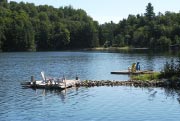 Meech Lake dump filled to extend property, dock built without permit.
Meech Lake dump filled to extend property, dock built without permit.
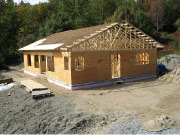 House built inside the park on Carman Road testifying to Marie Lemay’s uselessness in ensuring respect for the park’s master plan.
House built inside the park on Carman Road testifying to Marie Lemay’s uselessness in ensuring respect for the park’s master plan.
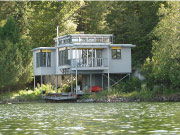 House at Meech Lake built on the lakebed, testifying to Marie Lemay’s helplessness to ensure respect for Section 6.2.3. of Chelsea Zoning Bylaw 379-92 when she was a senior official with the Municipality of Chelsea.
House at Meech Lake built on the lakebed, testifying to Marie Lemay’s helplessness to ensure respect for Section 6.2.3. of Chelsea Zoning Bylaw 379-92 when she was a senior official with the Municipality of Chelsea.
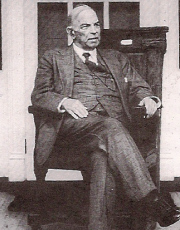 Mackenzie King on his porch at Kingsmere shortly before his death in 1950. He insisted on protecting the privacy of his country home.
Mackenzie King on his porch at Kingsmere shortly before his death in 1950. He insisted on protecting the privacy of his country home.
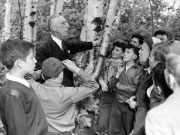 Gatineau Park founder Percy Sparks initiating a group of Ottawa school children to the principles of conservation, May 1949.
Gatineau Park founder Percy Sparks initiating a group of Ottawa school children to the principles of conservation, May 1949.
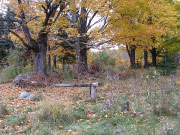 The NCC closed the Booth picnic grounds in 1989 to please Kingsmere residents.
The NCC closed the Booth picnic grounds in 1989 to please Kingsmere residents.
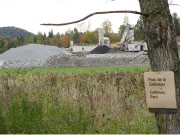 Construction of a highway through Meech Creek Valley, allegedly in Gatineau Park …
Construction of a highway through Meech Creek Valley, allegedly in Gatineau Park …
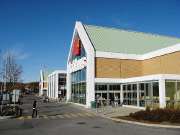 The St-Raymond Blvd. Loblaws located inside Gatineau Park (see our maps section for proof).
The St-Raymond Blvd. Loblaws located inside Gatineau Park (see our maps section for proof).
 House at Meech Lake built completely over the lake,
House at Meech Lake built completely over the lake,  Explosives left on the Meech Lake shore illegally during construction, summer 2008.
Explosives left on the Meech Lake shore illegally during construction, summer 2008.
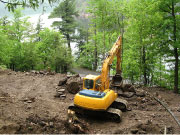 The NCC allows residential construction on the Meech Lake shoreline, helpless to stop it, summer 2008.
The NCC allows residential construction on the Meech Lake shoreline, helpless to stop it, summer 2008.
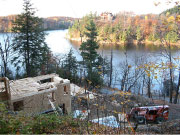 Construction across from Meech Lake’s historic Willson House.
Construction across from Meech Lake’s historic Willson House.
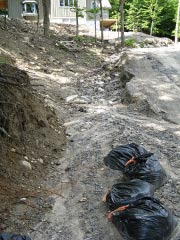 Meech Lake construction sends tons of sediment into bass habitat, summer 2008. More evidence that the NCC is shirking its responsibilities.
Meech Lake construction sends tons of sediment into bass habitat, summer 2008. More evidence that the NCC is shirking its responsibilities.
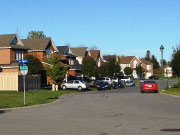 The NCC has allowed the building of 68 new houses inside it, near Gamelin Boulevard.
The NCC has allowed the building of 68 new houses inside it, near Gamelin Boulevard.
